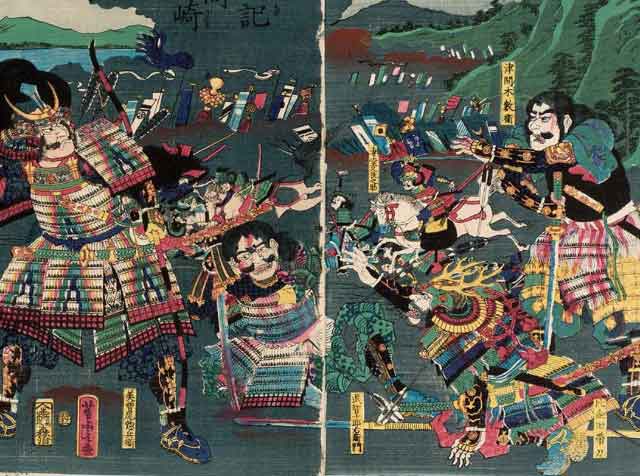
The Battle of Yamazaki is one of the most famous battles in Japanese history. The epicenter of the battle is Yamazaki, which is closer to the south of Kyoto. The date of the battle is July 2, 1582. The battle took place two weeks later, when Akechi Mitsuhide attacked and killed Oda Nobunaga and thus took over Nobunaga's power, and power in the capital, Kyoto. At the same time, Nobunaga's generals were located in different parts of the empire. The ruler was surrounded only by a handful of samurai. The enemy knew this important fact and skillfully took advantage of the situation. However, further events unfolded according to a different scenario.
Mitsuhide did not expect that the generals would be so loyal to their former master and be able to quickly avenge him. He believed to the last that time and a long distance were on his side. An important role in this confrontation was occupied by Honno-ji-Toyotomi Hideyoshi, who, keeping the death of the leader a secret from enemies and friends, managed to advance his army 40 km towards Kyoto. Further, other commanders joined him.
At the same time, Mitsuhide did not know how to properly hold the castle. First, his troops were very tired. Secondly, the united army (Toyotomi's forces) was approaching at great speed. He was well aware that Hideyoshi's army was stronger and outnumbered. In such a situation, Mitsuhide began to ask his son-in-law and his father for help, but was refused. The reason for the refusal was that both samurai were outraged by the sudden attack on Nobunaga. They feared for their lives and the lives of their soldiers. In addition, many people from Mitsuhide's army deserted during this time. Thus, Mitsuhide was left on his own, without outside help.
He decided to meet the advancing army at Yamazaki. This location was chosen for several reasons. The most basic is the ability to retreat if necessary. Secondly, the place itself had a good location. On the one hand, the Yodo River, which protected the right flank, and on the other hand, Mount Tennozan, 270m high, it acted as a defense of the left flank.
According to Mitsuhide's calculation, castles and natural defenses were supposed to provide reliable cover for his troops and thereby give an advantage over a numerous enemy. He positioned his army behind a small river, which provided a good defensive position. However, the enemy also did not waste time. On the night of July 1, the enemy sent several ninja to Mitsuhide's camp. They set fire to buildings, and thereby dispelled panic, fear among the soldiers, depriving them of normal sleep.
The Battle of Yamazaki took place the very next morning. On the same day, the main battles began. Each army took up its battle positions. Already at the first stages, the enemy army took advantageous positions and surrounded Mitsuhide's people. At this time, many Mitsuhide warriors fled. Only 200 people remained at Mitsuhide's disposition, who were destroyed by Hideyoshi's forces during the battle. This ended the battle of Yamazaki. Mitsuhide first fled, and a little later was killed by a peasant warrior. Thus, the reign of Mitsuhide lasted only 13 days.
See also
-
The Siege of Hara Castle

The Shimabara Rebellion of 1637–1638, which culminated in the siege of Hara Castle, was the last major uprising of the Edo period and had serious political consequences.
-
Battle of Tennoji
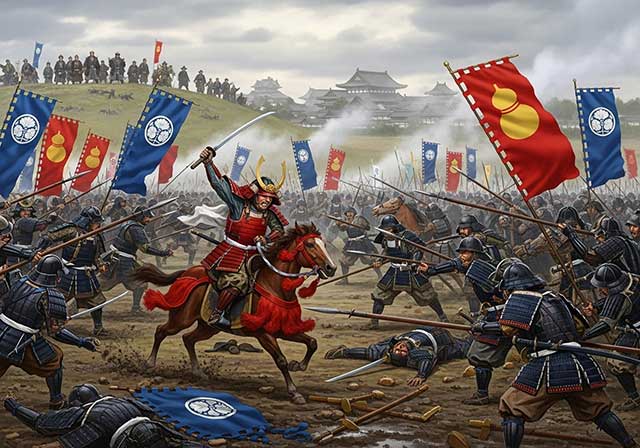
The confrontation between Tokugawa Ieyasu and Toyotomi Hideyori during the “Osaka Winter Campaign” ended with the signing of a peace treaty. On January 22, 1615, the day after the treaty was signed, Ieyasu pretended to disband his army. In reality, this meant that the Shimazu forces withdrew to the nearest port. On the same day, almost the entire Tokugawa army began filling in the outer moat.
-
Siege of Shuri Castle
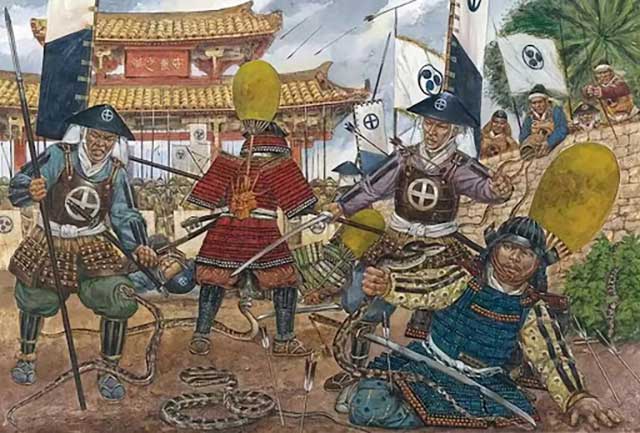
The Ryukyu Kingdom was established in 1429 on Okinawa, the largest island of the Ryukyu (Nansei) archipelago, as a result of the military unification of three rival kingdoms. In the following years, the state's control spread to all the islands of the archipelago.
-
The Siege of Fushimi Castle
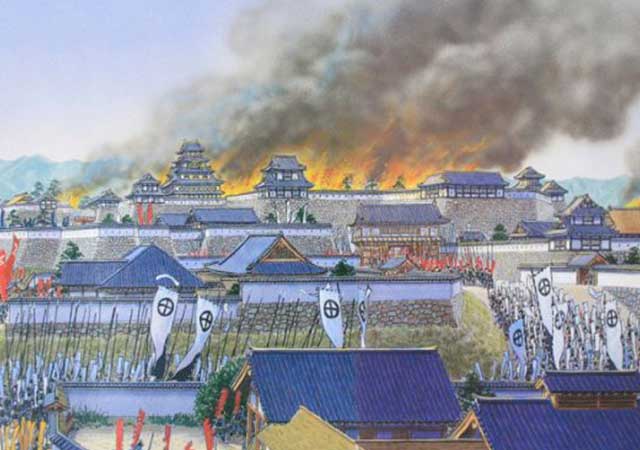
Fushimi can perhaps be considered one of the most “unfortunate” castles of the Sengoku Jidai period. The original castle was built by Toyotomi Hideyoshi in the southeast of Kyoto in 1594 as his residence in the imperial city.
-
The Siege of Otsu Castle
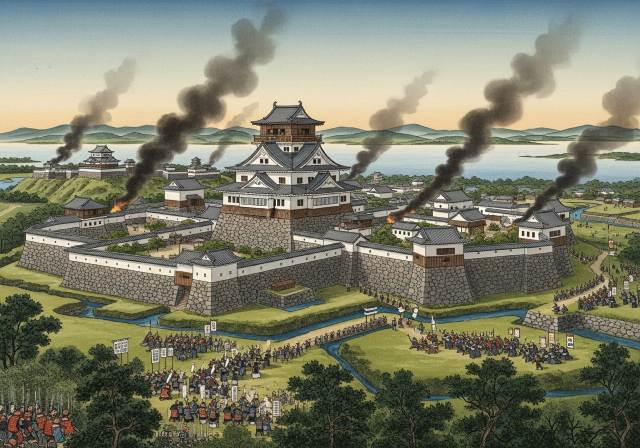
The siege of Otsu Castle was part of the Sekigahara campaign, during which the so-called Eastern Coalition, led by Tokugawa Ieyasu, fought against the Western Coalition, led by Ishida Mitsunari. Otsu Castle was built in 1586 by order of Toyotomi Hideyoshi near the capital Kyoto, on the site of the dismantled Sakamoto Castle. It belonged to the type of “water castles” — mizujō — as one side of it faced Japan's largest lake, Lake Biwa, and it was surrounded by a system of moats filled with lake water, which made the fortress resemble an island.
-
The Siege of Shiroishi Castle
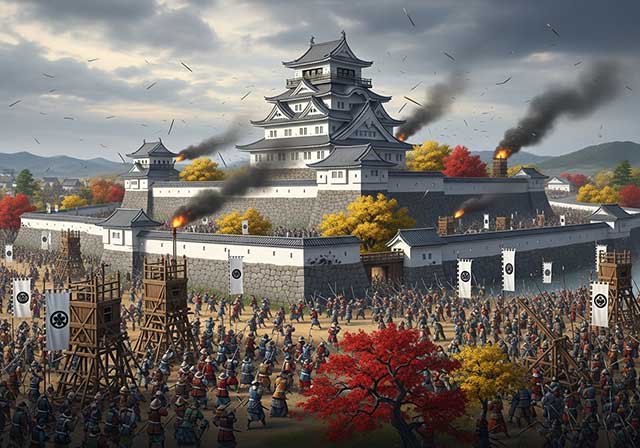
The siege of Shiroishi Castle was part of the Sekigahara campaign and took place several months before the decisive battle of Sekigahara. The daimyo of Aizu Province, Uesugi Kagekatsu, posed a serious threat to Tokugawa Ieyasu's plans to defeat the Western Coalition, and Ieyasu decided to curb his actions with the help of his northern vassals. To this end, he ordered Date Masamune to invade the province of Aizu and capture Shiroishi Castle.
-
The Second Siege of Jinju Castle
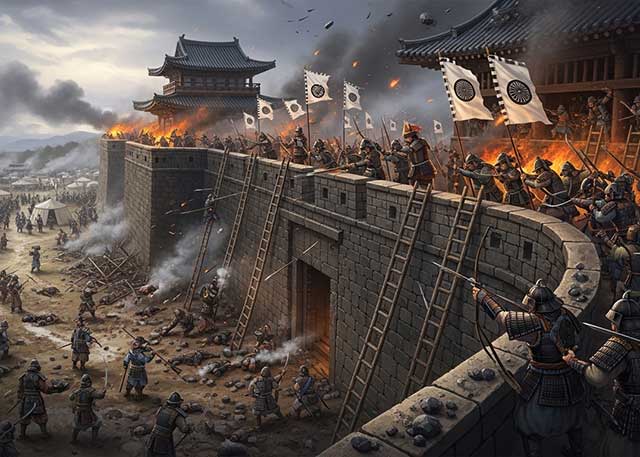
During the two Korean campaigns of the 16th century, the Japanese repeatedly had to capture enemy fortresses and defend occupied or constructed fortifications from the combined Korean and Chinese forces. Among all the operations of that time, the second siege of Jinju Castle is considered the most interesting from the point of view of siege warfare.
-
The Siege of Takamatsu Castle

The siege of Takamatsu Castle in Bitchu Province is considered the first mizuzeme, or “water siege,” in Japanese history. Until then, such an original tactic had never been used.

